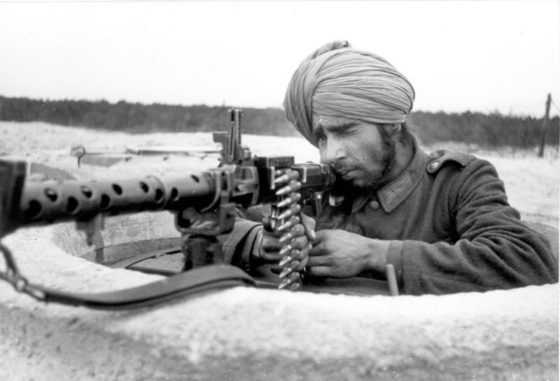
“Troops from the Russian America Company and the Imperial Russian Navy, along with their Aleutian tribal allies, fought an intermittent campaign against several hundred warriors from the Tlingit Nation.”
FEW MIGHT imagine Russia as a combatant in the 300-year-long “American Indian Wars” of North America.
While the English, French, Dutch, Spanish and later Americans all had violent histories with indigenous New World tribes, Russian colonists also made contact with aboriginals in the Pacific North West throughout the 18th and early 19th centuries. These interactions were not always cordial. Case in point: the Tlingit War of 1802 to 1804.
During the two-year conflict, troops from the Russian America Company and the Imperial Russian Navy, along with their Aleutian tribal allies, fought an intermittent campaign against several hundred warriors from the Tlingit Nation at New Archangel or what is now Sitka, Alaska. Located on Baranof Island in the archipelago that makes up the southern Alaska panhandle, the area had been chosen by the Tsar’s Alaska-based joint stock corporation as the site of a trading colony in 1799.

Once the stockade was erected, tensions began to mount between the Russians and the local Tlingit clan known as the Kiks Adi. Anger among the warriors and chiefs grew as Russians colonists attracted the affections of many of the young Tlingit women. Worse, the colonists demanded that the locals swear allegiance to the Russian monarch, Tsar Alexander I. When the traders conscripted indigenous men to work the outpost, the tensions finally boiled over.
In June of 1802, a war party of Tlingits struck at the Russian settlement at Sitka burning cabins, warehouses and dry-docks, massacring 150 Russians and Aleutian workers, and even capturing some of the families of the dead settlers.
The captain of an American vessel in Alaskan waters negotiated for the release of some of the captives and immediately made sail for Kodiak, the capital of Russian America, to report the incident. The governor of Russia’s Alaska colony, Alexandr Baranov, paid a ransom for the remaining hostages.
Two years later the governor organized an expedition to reclaim the island. In late September of 1804, the Russian warship Neva arrived in the area along with a flotilla of Aleut dugouts.
The four-day battle that followed saw a Russian shore party comprised of 150 soldiers, sailors and company men attempt to storm the nearby Tlingit village. They were joined by 400 allied Aleuts. Unfortunately for the attackers, the settlement’s defensive palisade, which had been reinforced all summer in anticipation of just such a retaliation, was too strong. The Tlingits managed to lay down heavy fire with muskets acquired from British and French traders and even managed to get off a few shots from a cannon supplied to them by the Hudson’s Bay Company. Although The assault was a failure; 12 Russians were killed.
Baranov, who himself was wounded in the action, responded with a naval artillery bombardment of the camp that lasted for four days.
The Tlingit sustained an unknown number of casualties in the attack and ended up calling for a truce. In the aftermath of the battle, the band evacuated the region altogether. They would return in the 1820s.
The Russians re-established their base on the island, eventually moving their Alaskan capital there in 1808. Sitka became a bustling frontier town for the Russians boasting an administrative nerve centre and a lively cultural scene. The small city would continue to thrive for decades. From Sitka, the Tsar would go on to establish small trading outposts on Hawaii and even the coast of California.
In the 1850s, the Tlingits would attack Sitka yet again. A raiding party very nearly captured the town in a two-hour battle but were eventually repelled by Russian artillery crews.
In the 1860s, the Russians would cede control of the entire region over to the United States.










Fascinating piece of history ! I’m beginning to believe the white-man (WASP) is determined to takeover no matter where they go…seems they have a hard time accepting the ways of other people… a little humor there, very little… You are, obviously, a fantastic researcher ! For what it’s worth, I’m impressed.
The “Aleuts” were not Allie’s with the Russians. The “alliance” was forced, coerced into following the Russians. By kidnapping, murder whatever it took. Shelikof had the largest known hunting party to ever exist, all by force. “Aleut” is a derogatory name. We are the Unangan!!!
The Tlingit War did not end with the Battle of Sitka. The next year the Tlingit/Eyak people of Yakutat destroyed the Russian agricultural settlement and shipyard of “New Russia” leaving no survivors. New Russia was the only attempt by the Russians to establish settler colonialism in Alaska. This battle may have been even more decisive than the Battle of Sitka because the Russia would not return to Yakutat nor attempt to establish a settler colony again in Russian American. This all but insured that the dominance of the Russian’s in Alaska would never be permanent, which ended up being the case. Today the Tlingit are one of the most powerful and influential political and economic stakeholders in Southeast Alaska(SeaAlaska Corp.), if not Alaska.